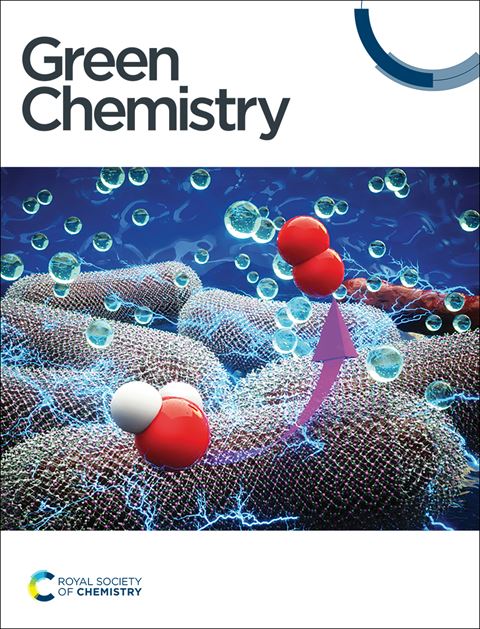Electrochemically assisted deprotection of acetals, ketals, and dithioacetals under neutral conditions†
IF 9.3
1区 化学
Q1 CHEMISTRY, MULTIDISCIPLINARY
引用次数: 0
Abstract
Electroorganic synthesis (EOS) enables unattainable molecular transformations that cannot be achieved through conventional acid/base or thermal reactions to be realized by exploiting molecular redox capabilities. The use of acetals as protecting groups for the carbonyl functionality is a pivotal component of natural product synthesis and drug discovery. Acetal deprotection typically requires aqueous acid hydrolysis. Herein, we present the development of an electrochemical deprotection reaction for cyclic acetal, ketal, and dithioacetal derivatives, with a diverse range of such aromatic and aliphatic substrates deprotected in yields of between 55% and quantitative. Mechanistic investigations provided insight into the electro-deprotection process involving acetals. Lithium perchlorate (LiClO4) plays a dual role, functioning as both the electrolyte and the oxygen source for the carbonyl moiety, with the electro-deprotection reaction proceeding to afford carbonyl products. Moreover, reaction efficiency was markedly enhanced by the addition of 1,3,5-trioxane, which acts as a Li activator.
中性条件下缩醛,酮和二硫缩醛的电化学辅助脱保护
通过利用分子氧化还原能力,电有机合成(EOS)可以实现传统酸/碱反应或热反应无法实现的分子转化。使用缩醛作为羰基功能的保护基团是天然产物合成和药物发现的关键组成部分。缩醛脱保护通常需要水溶液酸水解。在此,我们提出了一种电化学脱保护反应的发展,用于环缩醛,缩醛和二硫缩醛衍生物,在55%和定量的产率之间的各种芳香族和脂肪族底物的脱保护。机理研究提供了对涉及缩醛的电去保护过程的深入了解。高氯酸锂(LiClO4)具有双重作用,既是羰基部分的电解质,又是羰基部分的氧源,通过电脱保护反应产生羰基产物。此外,1,3,5-三氧环作为Li活化剂的加入显著提高了反应效率。
本文章由计算机程序翻译,如有差异,请以英文原文为准。
求助全文
约1分钟内获得全文
求助全文
来源期刊

Green Chemistry
化学-化学综合
CiteScore
16.10
自引率
7.10%
发文量
677
审稿时长
1.4 months
期刊介绍:
Green Chemistry is a journal that provides a unique forum for the publication of innovative research on the development of alternative green and sustainable technologies. The scope of Green Chemistry is based on the definition proposed by Anastas and Warner (Green Chemistry: Theory and Practice, P T Anastas and J C Warner, Oxford University Press, Oxford, 1998), which defines green chemistry as the utilisation of a set of principles that reduces or eliminates the use or generation of hazardous substances in the design, manufacture and application of chemical products. Green Chemistry aims to reduce the environmental impact of the chemical enterprise by developing a technology base that is inherently non-toxic to living things and the environment. The journal welcomes submissions on all aspects of research relating to this endeavor and publishes original and significant cutting-edge research that is likely to be of wide general appeal. For a work to be published, it must present a significant advance in green chemistry, including a comparison with existing methods and a demonstration of advantages over those methods.
 求助内容:
求助内容: 应助结果提醒方式:
应助结果提醒方式:


